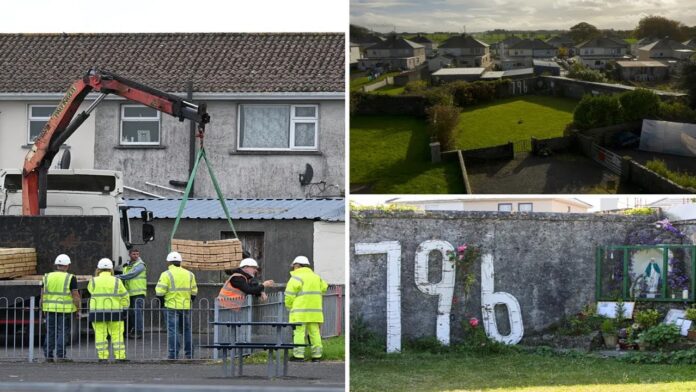Experts begin forensic dig at Tuam to exhume remains of nearly 800 infants discarded in a septic tank
A haunting chapter of Irish history is being exhumed—literally. Forensic experts have begun digging at the site of a former Catholic-run mother-and-baby home in Tuam, County Galway, where the bodies of 796 infants were secretly dumped in a sewage tank. The dig follows decades of campaigning by survivors and historians to honour the forgotten dead.
From 1925 to 1961, the Bon Secours Sisters ran the Tuam home, where unmarried pregnant women were sent to give birth out of sight of society. Many of their children died young, but the full scale of the tragedy wasn’t discovered until 2014, when local historian Catherine Corless uncovered death certificates for 796 children—with no corresponding burial records.
Instead of proper graves, these innocent babies were discarded like waste into a disused septic system on the grounds of the institution. There were no headstones, no markers, no funerals—just silence.
“It’s as if they never existed,” Corless said. “There are no burial records for the children, no cemetery, no statue, no cross, absolutely nothing.”
Now, that silence is being broken. On Monday, 16 June 2025, groundworks began to exhume the remains. The mass grave lies beneath what used to be a playground. Workers fenced off the area, where heavy machinery began carefully removing earth, layer by layer.
Daniel MacSweeney, the Director of Authorised Intervention at the site, said the remains will be forensically analysed, DNA-tested, and—where possible—returned to surviving relatives. Where identification is impossible, a dignified group reburial will follow.
The process is expected to take up to two years.
Among those waiting anxiously is Annette McKay, whose baby sister, Mary Margaret, died at just six months old after being born at Tuam. “She didn’t even get a coffin,” McKay said tearfully. “We want to bring her home.”
The horror has cast a long shadow over Ireland’s reckoning with its institutional past. An official government inquiry previously revealed that nearly 9,000 children died in 18 similar homes between 1922 and 1998—often from preventable conditions such as malnutrition, respiratory infections, and neglect.
Many mothers were forced into labour, had their children taken without consent, and were silenced by shame.
In 2021, the Irish government formally apologised for the abuses. Legislation was passed to permit exhumations and investigations. Survivors have since demanded not just justice but remembrance.
“There’s still a culture of silence around what happened,” said Brid Ni Mhaoileoin, a Tuam survivor and activist. “This dig is not just about bones. It’s about truth, dignity, and acknowledging lives that were erased.”
Forensic experts caution that identifying the babies will be difficult. Remains may be fragmented or degraded, and DNA matching depends on surviving family members stepping forward. Still, the effort is seen as a moral obligation.
Public outcry remains high. “You don’t dump babies in a septic tank and walk away,” said one Galway resident. “This was a crime against the most vulnerable.”
As Ireland watches this excavation unfold, emotions are raw. Some demand criminal accountability. Others want reparations. All agree: these children, hidden for generations, deserve more than a pit in the ground.
Finally, they are being seen.
